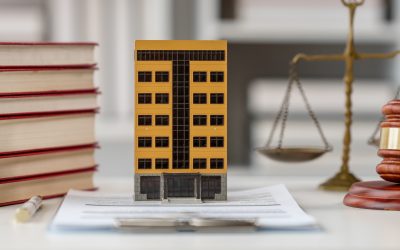In 1998, the New Jersey Legislature passed into law the “Brownfields and Contaminated Site Remediation Act.” The Legislature determined that due to New Jersey’s industrial history, large areas in the State’s urban and suburban areas formerly used for commercial and industrial purposes are at present either under used or abandoned; possibly contaminated with hazardous substances which pose a health risk; and are creating a financial drain on a municipality because they have no productive use and fail to generate property taxes and jobs. The State’s solution to cure this societal ill is to provide comprehensive legislation to assist both municipalities and private developers to identify Brownfield sites, assess the degree of environmental cleanup required, encourage State cooperation to facilitate an easier cleanup process and to offer a variety of incentives through grants, low-interest loans and tax incentives to encourage Brownfields redevelopment.
What Are Brownfields?
A Brownfields site has three distinct elements: it must be a former or current industrial/commercial site; currently vacant or under-utilized; and known to be or suspected of having contamination. The State views Brownfields sites as neighborhood eyesores, a breeding ground for crime, a potential health risk and being responsible for the loss of jobs and tax revenue.
The Brownfields Act encourages each municipality, through its zoning and planning powers, to identify and classify Brownfields sites in its community. Brownfields sites may be either publicly or privately owned. As part of the process, the Act encourages that the municipality develop a marketing strategy to encourage the sale and ultimate redevelopment of its Brownfields sites.
The Incentives
One of the more significant steps in dealing with Brownfields sites is identifying the degree and type of contamination. Although not available to private developers, municipalities can receive 100% grants for the investigation of contamination on most Brownfields sites owned by a municipality. The site investigation will, in turn, result in recommendations for the proper environmental remediation of the property in question. The types of remediation will vary on the degree of contamination and the type of use proposed for redevelopment.
With respect to cleanup, the State provides a variety of monetary incentives to both municipalities and private developers. For instance, the legislature has created the “Hazardous Discharge Site Remediation Fund (“HDSRF”). The HDSRF avails a municipality of up to $2,000,000.00 a year through grants for investigation and low-interest loans (2 points below the Federal Discount Rate with a 3% floor) for remediation. The HDSRF also provides up to $1,000,000.00 per year to a private developer through proportionate grants and loans at the Federal Discount Rate with a 5% floor.
There are a variety of other State sponsored incentives through the New Jersey Redevelopment Authority (loans and grants for acquisition and remediation) and tax abatements (State taxes will be reimbursed to a developer in an amount of up to 75% of the cost of remediation over a period of time). Funds are likewise available from the New Jersey Commerce and Economic Growth Commission and the New Jersey Economic Development Authority. The list goes on with other State and Federal funding sources providing loans and partial grants.
The Remediation
As mentioned above, the type and degree of remediation will depend upon the circumstances. The Brownfields Act helps to ease the cleanup process, attempting to make it more “user friendly.” The mechanism is what is known as a “Memorandum of Agreement”, which is an agreement between a developer and the New Jersey Department of Environmental Protection to remediate a property. If a developer meets the terms of the Memorandum of Agreement, it will be protected from future liability in the event unsuspected or unknown contamination is discovered at some later date. It is important to know that the execution of the Memorandum of Agreement must occur before any of the loans, grants or other incentives discussed above are given to any developer.
Conclusion
The Brownfields Act is aggressive legislation which attempts to coordinate several State agencies for a singular purpose: to promote the redevelopment of environmentally impacted, underutilized properties through loans, grants, incentives and cooperation from the New Jersey Department of Environmental Protection. Towns and developers should avail themselves of the variety of financial programs available to turn an obsolescent parcel into a viable and valuable property.
James J. Delia is a Partner at WJ&L, LLPwho practices in the Real Estate and Land Use & Zoning areas.
